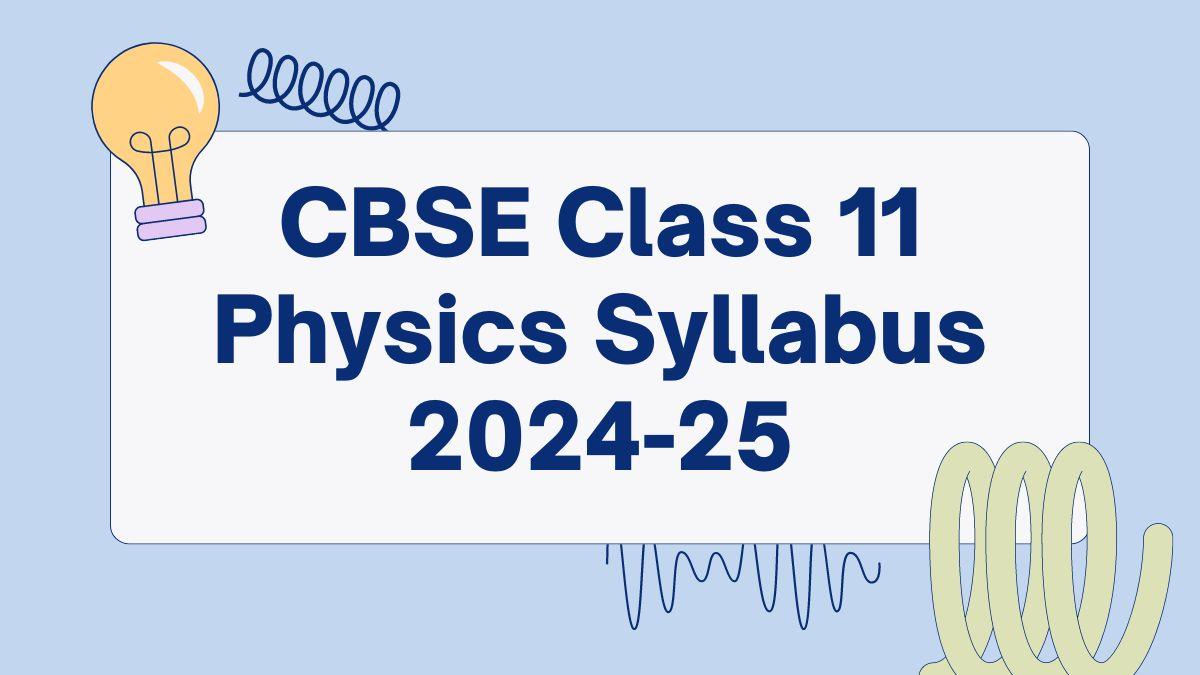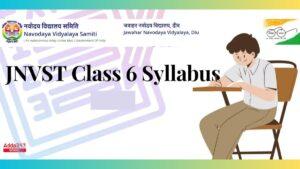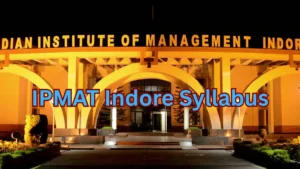The Central Board of Secondary Education has released the CBSE Class 11 Physics Syllabus 2024-25 on the official website, cbseacademic.nic.in. The CBSE is well-known for its demanding and organized syllabus. The Physics curriculum for students beginning their Class 11 journey in 2024 aims to establish a strong base for enhanced scientific comprehension and analytical abilities. In this article, we will provide students with a detailed syllabus for CBSE class 11 Physics for the session 2024-25.
Class 11 Physics Syllabus 2024-25
The CBSE Class 11 Physics Syllabus 2024-25 will assist students in preparing for exams as well as competitive tests like NEET or JEE. Students should make sure to study the designated material for each topic in order to fully grasp the subject. Therefore, it is important for students to have a clear understanding of the recently revised Physics curriculum. You download the CBSE latest Syllabus for Class 11 Physics 2024-25 in PDF format from this article.
Class 11 Physics Syllabus: Overview
The CBSE class 11 physics subject is an important part of the curriculum of science stream students. Any student who want to pursue further education in Engineering and related domain must master all the important concepts given in Physics subject. The Physics subject has a total weightage of 100 marks in the final exam. Of all the 100 marks, 70 marks are awarded through theory exams while the rest of 30 marks is kept aside for the practical examination.
CBSE Class 11 Physics Exam Paper Pattern 2024
The subject code for the CBSE class 11 Physics 42. Along with knowing the CBSE class 11 physics syllabus 2024-25, students should also know the paper pattern and distribution of marks across various chapters. The detailed paper pattern for CBSE class 11 Physics 2024-25 is given hereunder.
| Unit Number | Name of the Unit and Chapters | Marks Weightage |
| Unit–I | Physical World and Measurement | 23 |
| Chapter–2: Units and Measurements | ||
| Unit-II | Kinematics | |
| Chapter–3: Motion in a Straight Line | ||
| Chapter–4: Motion in a Plane | ||
| Unit-III | Laws of Motion | |
| Chapter–5: Laws of Motion | ||
| Unit-IV | Work, Energy and Power | 17 |
| Chapter–6: Work, Energy and Power | ||
| Unit–V | Motion of System of Particles and Rigid Body | |
| Chapter–7: System of Particles and Rotational Motion | ||
| Unit–VI | Gravitation | |
| Chapter–8: Gravitation | ||
| Unit–VII | Properties of Bulk Matter | 20 |
| Chapter–9: Mechanical Properties of Solids | ||
| Chapter–10: Mechanical Properties of Fluids | ||
| Chapter–11: Thermal Properties of Matter | ||
| Unit–VIII | Thermodynamics | |
| Chapter–12: Thermodynamics | ||
| Unit–IX | Behaviour of Perfect Gases and Kinetic Theory of Gases | |
| Chapter–13: Kinetic Theory | ||
| Unit–X | Oscillations and Waves | 10 |
| Chapter–14: Oscillations | ||
| Chapter–15: Waves | ||
| Total | 70 | |
Class 11th Physics Chapters 2024
Check the detailed CBSE class 11 physics syllabus 2024-25 below. Every student who are studying in class 11 currently should go through this updated syllabus.
Unit I: Physical World and Measurement (08 Periods)
Chapter–2: Units and Measurements
Need for measurement: Units of measurement; systems of units; SI units, fundamental and derived units. significant figures. Dimensions of physical quantities, dimensional analysis and its applications.
Unit II: Kinematics (24 Periods)
Chapter–3: Motion in a Straight Line
Frame of reference, Motion in a straight line, Elementary concepts of differentiation and integration for describing motion, uniform and nonuniform motion, and instantaneous velocity, uniformly accelerated motion, velocity – time and position-time graphs. Relations for uniformly accelerated motion (graphical treatment).
Chapter–4: Motion in a Plane
Scalar and vector quantities; position and displacement vectors, general vectors and their notations; equality of vectors, multiplication of vectors by a real number; addition and subtraction of vectors, Unit vector; resolution of a
vector in a plane, rectangular components, Scalar and Vector product of vectors. Motion in a plane, cases of uniform velocity and uniform acceleration projectile motion, uniform circular motion.
Unit III: Laws of Motion (14 Periods)
Chapter–5: Laws of Motion
Intuitive concept of force, Inertia, Newton’s first law of motion; momentum and Newton’s second law of motion; impulse; Newton’s third law of motion. Law of conservation of linear momentum and its applications. Equilibrium of concurrent forces, Static and kinetic friction, laws of friction, rolling friction, lubrication. Dynamics of uniform circular motion: Centripetal force, examples of circular motion (vehicle on a level circular road, vehicle on a banked road).
Unit IV: Work, Energy and Power (14 Periods)
Chapter–6: Work, Energy and Power
Work done by a constant force and a variable force; kinetic energy, work energy theorem, power. Notion of potential energy, potential energy of a spring, conservative forces: non-conservative forces, motion in a vertical circle; elastic and inelastic collisions in one and two dimensions.
Unit V: Motion of System of Particles and Rigid Body (18 Periods)
Chapter–7: System of Particles and Rotational Motion
Centre of mass of a two-particle system, momentum conservation and Centre of mass motion. Centre of mass of a rigid body; centre of mass of a uniform rod. Moment of a force, torque, angular momentum, law of conservation
of angular momentum and its applications. Equilibrium of rigid bodies, rigid body rotation and equations of rotational motion, comparison of linear and rotational motions. Moment of inertia, radius of gyration, values of moments of inertia for simple geometrical objects (no derivation).
Unit VI: Gravitation (12 Periods)
Chapter–8: Gravitation
Kepler’s laws of planetary motion, universal law of gravitation. Acceleration due to gravity and its variation with altitude and depth. Gravitational potential energy and gravitational potential, escape speed, orbital velocity of a satellite.
Unit VII: Properties of Bulk Matter (24 Periods)
Chapter–9: Mechanical Properties of Solids
Elasticity, Stress-strain relationship, Hooke’s law, Young’s modulus, bulk modulus, shear modulus of rigidity (qualitative idea only), Poisson’s ratio; elastic energy.
Chapter–10: Mechanical Properties of Fluids
Pressure due to a fluid column; Pascal’s law and its applications (hydraulic lift and hydraulic brakes), effect of gravity on fluid pressure. Viscosity, Stokes’ law, terminal velocity, streamline and turbulent flow, critical velocity, Bernoulli’s theorem and its simple applications. Surface energy and surface tension, angle of contact, excess of pressure
across a curved surface, application of surface tension ideas to drops, bubbles and capillary rise.
Chapter–11: Thermal Properties of Matter
Heat, temperature, thermal expansion; thermal expansion of solids, liquids and gases, anomalous expansion of water; specific heat capacity; Cp, Cv – calorimetry; change of state – latent heat capacity. Heat transfer-conduction, convection and radiation, thermal conductivity, qualitative ideas of Blackbody radiation, Wein’s displacement Law, Stefan’s law .
Unit VIII: Thermodynamics (12 Periods)
Chapter–12: Thermodynamics
Thermal equilibrium and definition of temperature, zeroth law of thermodynamics, heat, work and internal energy. First law of thermodynamics, Second law of thermodynamics: gaseous state of matter, change of condition of gaseous state -isothermal, adiabatic, reversible, irreversible, and cyclic processes.
Unit IX: Behavior of Perfect Gases and Kinetic Theory of Gases (08 Periods)
Chapter–13: Kinetic Theory
Equation of state of a perfect gas, work done in compressing a gas. Kinetic theory of gases – assumptions, concept of pressure. Kinetic interpretation of temperature; rms speed of gas molecules; degrees of freedom, law of equi-partition of energy (statement only) and application to specific heat capacities of gases; concept of mean free path, Avogadro’s number.
Unit X: Oscillations and Waves (26 Periods)
Chapter–14: Oscillations
Periodic motion – time period, frequency, displacement as a function of time, periodic functions and their applications. Simple harmonic motion (S.H.M) and its equations of motion; phase; oscillations of a loaded spring- restoring force and force constant; energy in S.H.M. Kinetic and potential energies; simple pendulum derivation of expression for its time period.
Chapter–15: Waves
Wave motion: Transverse and longitudinal waves, speed of travelling wave, displacement relation for a progressive wave, principle of superposition of waves, reflection of waves, standing waves in strings and organ pipes,
fundamental mode and harmonics, Beats.
CBSE Class 11 Physics Syllabus 2024-25 SPDF Download
Check the CBSE class 11 Physics syllabus 2024-25 latest pdf provided by the academic unit of the Central Board of Secondary Education below. Candidates can download the syllabus PDF for free by clicking the download link given below.
Download CBSE Class 11 Physics Syllabus 2024-25 PDF
CBSE Class 11 Physics Syllabus 2024-25: Recommend Books
Check the important resources for the CBSE class 11 physics subject preparation below.
1. Physics Part-I, Textbook for Class XI, Published by NCERT
2. Physics Part-II, Textbook for Class XI, Published by NCERT
3. Laboratory Manual of Physics, Class XI Published by NCERT
4. The list of other related books and manuals brought out by NCERT (consider multimedia also).









 CUET BEd Syllabus 2026, Check Subject Wi...
CUET BEd Syllabus 2026, Check Subject Wi...
 Navodaya Syllabus for 6th Class PDF Down...
Navodaya Syllabus for 6th Class PDF Down...
 IPMAT Indore Syllabus 2026: Section-wise...
IPMAT Indore Syllabus 2026: Section-wise...









